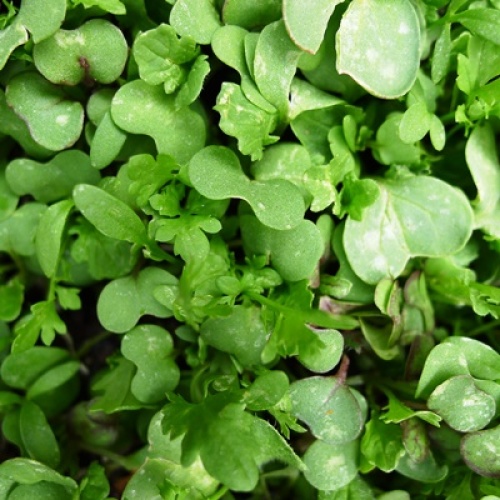
Few gardening activities are as satisfying as planting an early-season garden. In just a few weeks after planting, you’ll be able to harvest greens to help celebrate the start of another gardening season.
Root crops, cole crops and leafy greens prefer spring’s chill and can withstand light to moderate frosts and nighttime temperatures in the 40s. Peas and carrots are part of a group of tasty early-season vegetables that can stand cooler temperatures.
If the garden bed is still too wet to plant, you can plant in containers or a raised bed. Raised planting beds are naturally warmer, and you won’t have to trample on delicate soil.
Cool-weather gardening can begin 4-6 weeks before the average date of the last killing frost. Check with your county’s Extension to find the average for your area, or you can use the weed test. If weeds have started growing, it’s a good sign your greens will start growing, too.
If you’re planting from seed, dig a furrow in the raised bed and plant seeds ½ to 1-inch deep and several inches apart, depending on the vegetable. Cover lightly with soil, pat the soil and keep consistently moist. If necessary, thin seedlings after they’ve grown about 2-3 inches tall.
You can also plant cool-season crops as transplants. Garden centers are typically stocked with broccoli plants, cabbage plants, onion sets and potatoes.
Plan for planting more vegetables starting 2-4 weeks before the frost-free date. These vegetables include carrots, Swiss chard, spinach, radishes, turnips, beets, lettuce, parsnips, and mustard greens. Plant another round of seeds at four-week intervals, to ensure a continuous supply.
Because spring weather is unsettled, watch the weather forecast for temperatures that drop below freezing. Cover plants with buckets, milk jugs, containers or old blankets to protect plants. Remove coverings each morning to rewarm the soil.
Some vegetable gardeners take advantage of early season gardening to add perennial vegetables to their gardens, too. Plant horseradish, asparagus, chives and rhubarb now for many seasons of spring gardening.
Fine Gardening Recommended Products

Ho-Mi Digger - Korean Triangle Blade
Fine Gardening receives a commission for items purchased through links on this site, including Amazon Associates and other affiliate advertising programs.

The Crevice Garden: How to make the perfect home for plants from rocky places
Fine Gardening receives a commission for items purchased through links on this site, including Amazon Associates and other affiliate advertising programs.

Gardener's Log Book from NYBG
Fine Gardening receives a commission for items purchased through links on this site, including Amazon Associates and other affiliate advertising programs.



















Comments
Log in or create an account to post a comment.
Sign up Log in